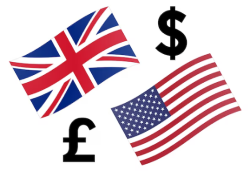
Flexity Analysis for GBPUSD
Forecast Overall(Short-Term, Long-Term): ST=Undecided LT=Probably Down
Forecast Methods(Short-Term, Long-Term):
[Method0] ST=Same LT=Same
[Method1] ST=Down LT=Down
[Method2] ST=Up LT=Down
FlexityIndicator Analysis Method(0)
Short-Term: **Answer:** The GBP/USD price is expected to remain stable (stay the same) in the short term, fluctuating within a narrow range of $1.33 to $1.34. Long-Term: Based on the analysis of the provided information: **Long-Term Expectation:** The GBP/USD is currently in a narrow horizontal trading range with a high probability of remaining between $1.33 and $1.37 over the next three months. While there are mixed indicators, including cautious optimism from market sentiment and increased volume alongside price rises, these are offset by bearish signals such as negative moving averages and MACD divergence. **Conclusion:** The long-term expectation for GBP/USD is that it will likely **stay the same**, continuing within the established range of $1.33 to $1.37. While there is potential for a bullish movement if resistance levels are breached, the overall indicators suggest a sideways trend with no strong directionality expected in the immediate long term.
Result: [Method0] ST=Same LT=Same
FlexityIndicator Analysis Method(1)
Short-Term: **Conclusion**: Based on the analysis of various factors such as the UK's fiscal deficit, geopolitical risks, positive US economic data, and market movements indicating selling pressure and rebound attempts, the GBPUSD is expected to **go down** in the short term. Long-Term: **Answer:** The price of GBPUSD is expected to go down in the long term due to factors such as the UK's budget deficit, potential depreciation from economic policy concerns, trade deficits, dollar strength, and central bank policies favoring the US currency.
Result: [Method1] ST=Down LT=Down
FlexityIndicator Analysis Method(2)
Short-Term: **Short-term Outlook for GBPUSD:** The GBPUSD pair is currently exhibiting mixed signals based on recent trading activity and market news. 1. **Recent Price Action:** The GBPUSD rebounded after reaching a low at 1.32594, indicating some bullish momentum as buyers entered the market. This upward movement suggests a potential short-term recovery. 2. **Technical Levels:** - **Support Zone:** The current price is within the support zone of 1.3323–1.3341, where buyers are attempting to reestablish this level. - **Resistance Levels:** Key resistance points are at 1.33887 (100-hour MA) and 1.34227 (200-hour MA). Breaking above these levels could indicate a shift in momentum favoring bulls. 3. **Market Sentiment:** External factors, such as the strengthening US dollar influenced by political instability in France and Japan, are pressuring the GBP, which might lead to downward pressure on GBPUSD. 4. **Historical Context:** While the GBP has shown a short-term decrease of 1.8% over four weeks, it has an overall increase of 1.75% over the past year, indicating some underlying strength. **Conclusion:** The immediate short-term outlook is mixed. The pair's ability to break above the 100-hour MA at 1.33887 will be crucial. If successful, it may indicate further bullish momentum; if not, it could retest lower levels within the support zone. Given the external pressures, there is a likelihood of some downward pressure or stabilization in the very short term, but buyers' activity suggests potential for recovery. **Final Answer:** The GBPUSD is expected to remain **short-term stable with a slight bullish bias**, depending on whether it can sustain above key resistance levels. Long-Term: Based on the analysis of the given context, the GBPUSD is currently experiencing downward pressure due to the strengthening US dollar and geopolitical instability in France and Japan. While there are no explicit long-term forecasts, the short-term trend suggests a bearish outlook for GBPUSD. Therefore, it is reasonable to infer that: **Answer:** The price for GBPUSD is expected to go down.
Result: [Method2] ST=Up LT=Down
